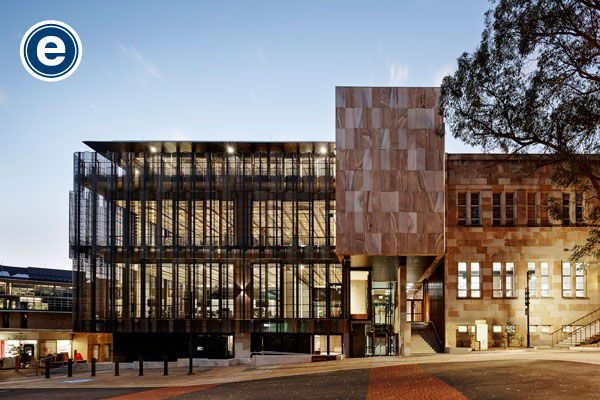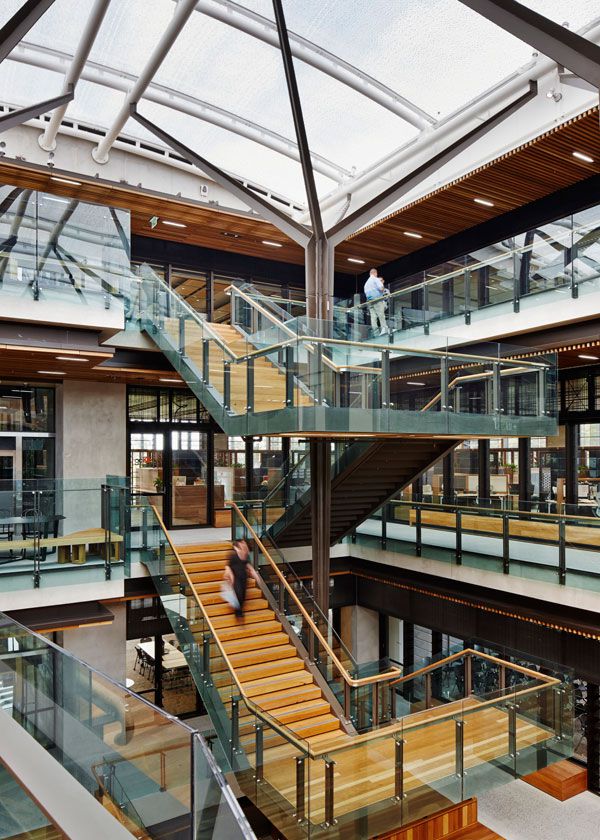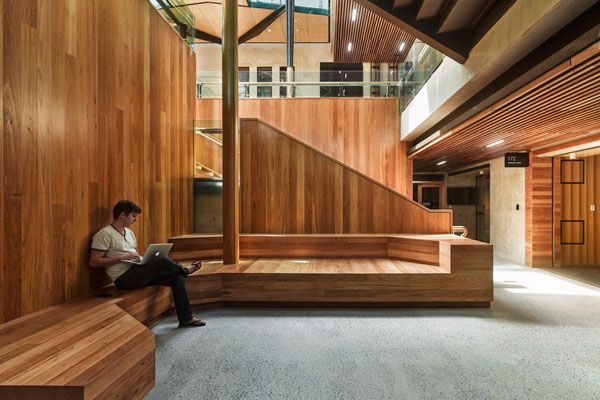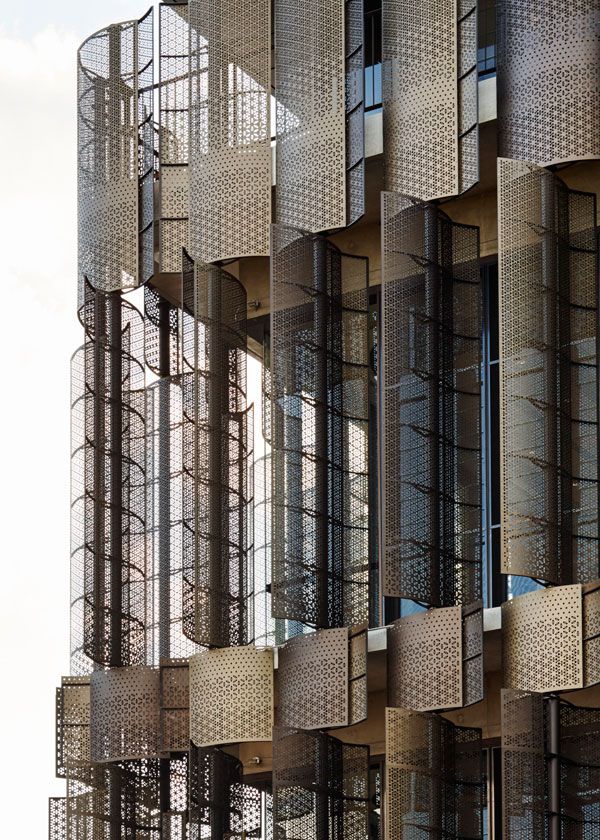You might expect a building dedicated to demonstrating sustainable technological research and sustainable building solutions to be pretty damn sustainable itself. The Global Change Institute at the University of Queensland, designed by HASSELL, doesn’t fail to deliver.

March 17th, 2015

In a country where the eaveless, energy-guzzling McMansion has become the archetype of the built environment, it’s refreshing to find a building that meets the world’s most advanced levels of sustainability. The $32 million Global Change Institute (GCI) designed by Hassell is one of the first buildings to be registered for the Living Building Challenge.

The building has been designed to work with the natural environment and to operate as a zero-energy and carbon neutral workplace. It is naturally ventilated for most of the year and generates and stores all its own power on-site through renewable solar energy sources that are pollution free.
The GCI also represents the first Australian use of structural Geopolymer concrete, a low-carbon product produced with significantly lower greenhouse gas emissions than conventional concrete.
Indeed, the building moves away from a framework of consumption of the world’s resources to one that actively contributes to the restoration and regeneration of the environment. It also acts as a live research site, with the building systems and occupants used to assess optimal comfort conditions in low-energy buildings for the sub-tropics.
An operable sun shading system tracks the sun and protects the glass louvres which encourage natural ventilation. The air flows across occupied spaces to the central atrium which acts as the buildings ‘lungs’, discharging warm air through its thermal chimney. The translucent ETFE atrium roof (similar to that used on the Water Cube at the Beijing Olympics) allows natural light into the interior while insulating from the sun’s heat. Optimal natural lighting is supported by enviro-friendly LED lighting.
Chilled water flushed through the exposed Geopolymer precast floor panels works to keep the building chilled, while rainwater storage of 60,000 litres services the hydronic cooling system, kitchen and showers.
A green wall, bush tucker garden and bio-retention basin breathe life into the building’s green ethos, and the university’s campus pedestrian links provide easy access by foot or bike.

Photography by Peter Bennetts
The GCI has won numerous awards, including the prestigious 2014 BPN Sustainability Awards for Public Building and Urban Design.
Design team:
_ UQ Property and Facilities Division – Project Management
_ HASSELL – Architecture, Interiors & Landscape
_ Arup – Sustainability, Acoustics & Fire
_ Medland Metropolis – Mechanical and Electrical
_ Bligh Tanner – Structure, Civil + Façade
_ SPP Group – Hydraulics
_ Rider Levett Bucknall – Quantity Surveyor
_ Riddel Architecture – Heritage
_ McNab – Builder
_ Umow Lai – Commissioning Agent
HASSELL
hassellstudio.com
A searchable and comprehensive guide for specifying leading products and their suppliers
Keep up to date with the latest and greatest from our industry BFF's!

Sub-Zero and Wolf’s prestigious Kitchen Design Contest (KDC) has celebrated the very best in kitchen innovation and aesthetics for three decades now. Recognising premier kitchen design professionals from around the globe, the KDC facilitates innovation, style and functionality that pushes boundaries.

Marylou Cafaro’s first trendjournal sparked a powerful, decades-long movement in joinery designs and finishes which eventually saw Australian design develop its independence and characteristic style. Now, polytec offers all-new insights into the future of Australian design.

In the pursuit of an uplifting synergy between the inner world and the surrounding environment, internationally acclaimed Interior Architect and Designer Lorena Gaxiola transform the vibration of the auspicious number ‘8’ into mesmerising artistry alongside the Feltex design team, brought to you by GH Commercial.

Channelling the enchanting ambience of the Caffè Greco in Rome, Budapest’s historic Gerbeaud, and Grossi Florentino in Melbourne, Ross Didier’s new collection evokes the designer’s affinity for café experience, while delivering refined seating for contemporary hospitality interiors.

Designpreneur Tomek Archer shares his top tips as one-third of the most interesting design/tech start-ups to hit the market in 2012.
designEX is an Australian exhibition for interior architecture and design.
It offers a comprehensive showcase of new and innovative products, exciting features, prestigious awards and informative seminars and course.
The internet never sleeps! Here's the stuff you might have missed

Artificial intelligence is one of the defining issues of our time. Here are five ideas articles addressing the anxieties and possibilities of the technology in design.

Esteemed international practice OMA has completed AIR in Singapore, a genre-straddling project defined by openness and an emphasis on waste.